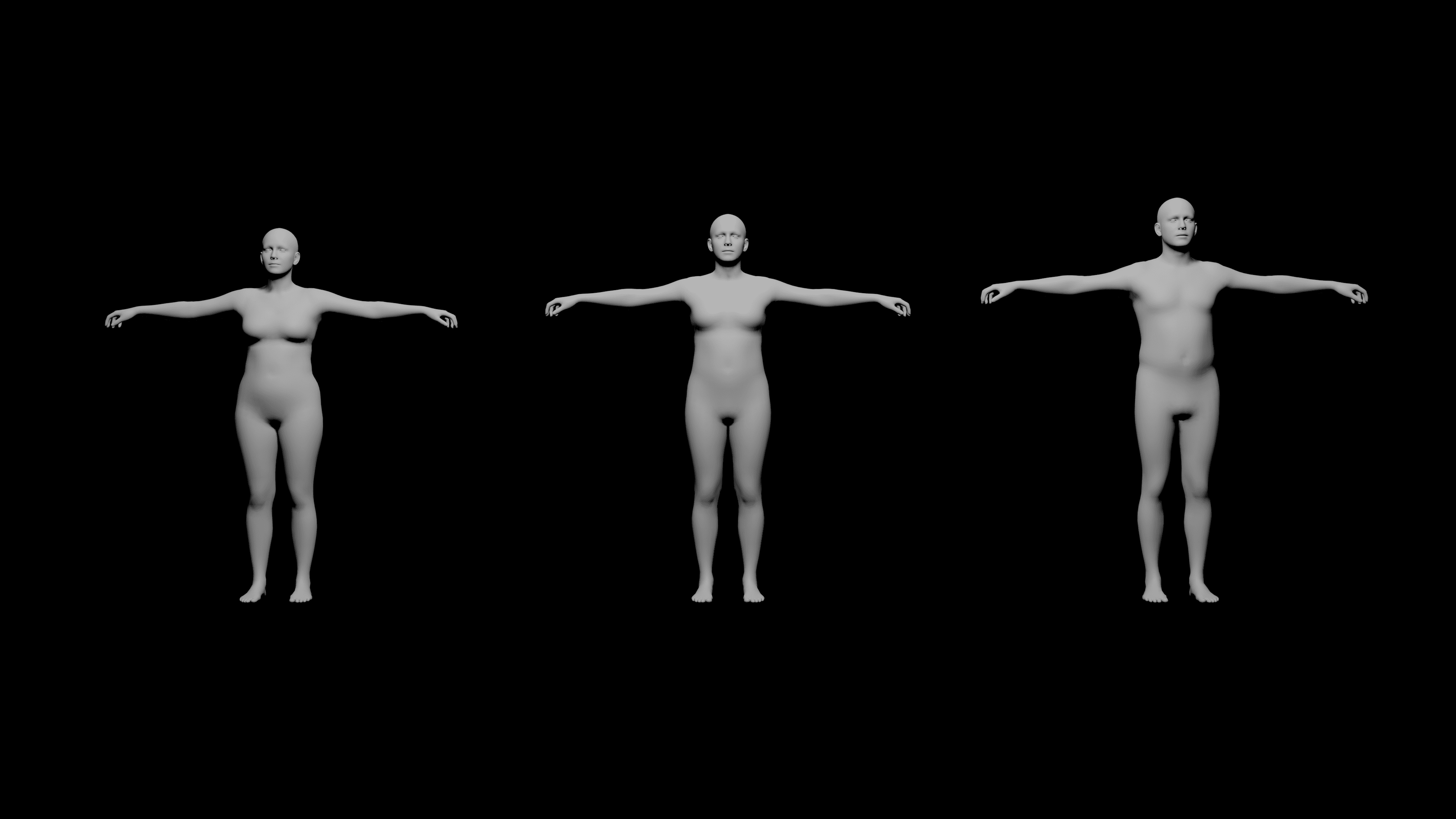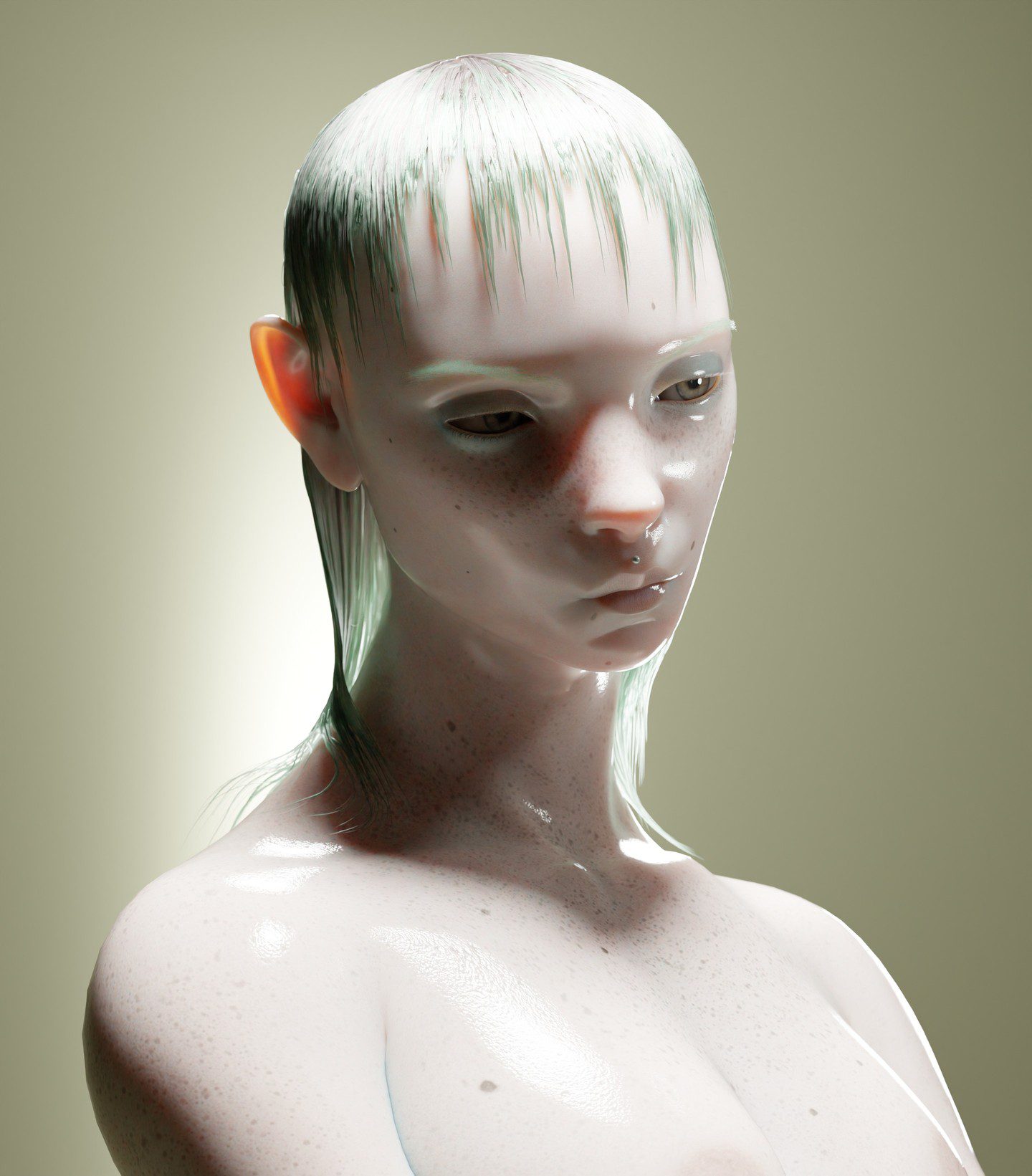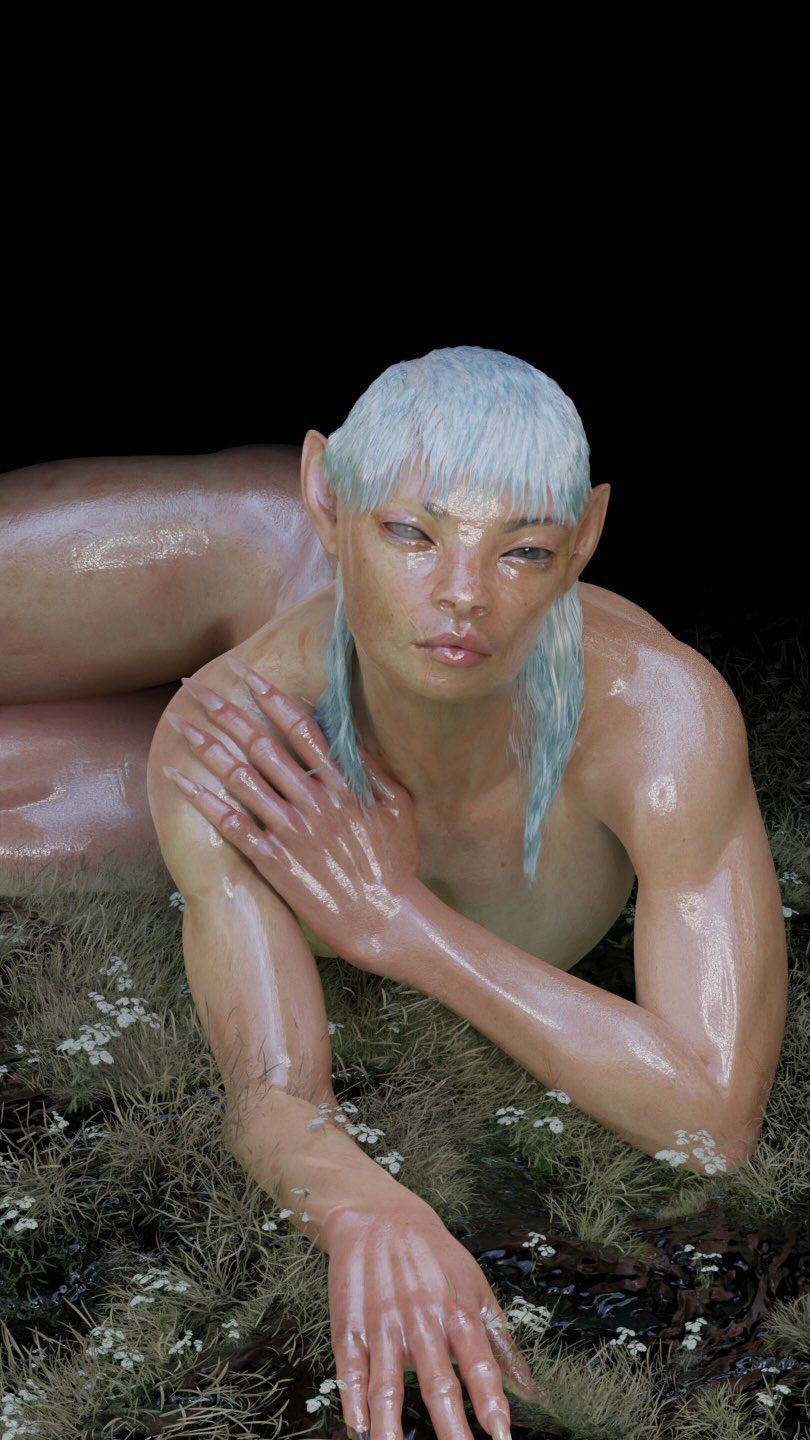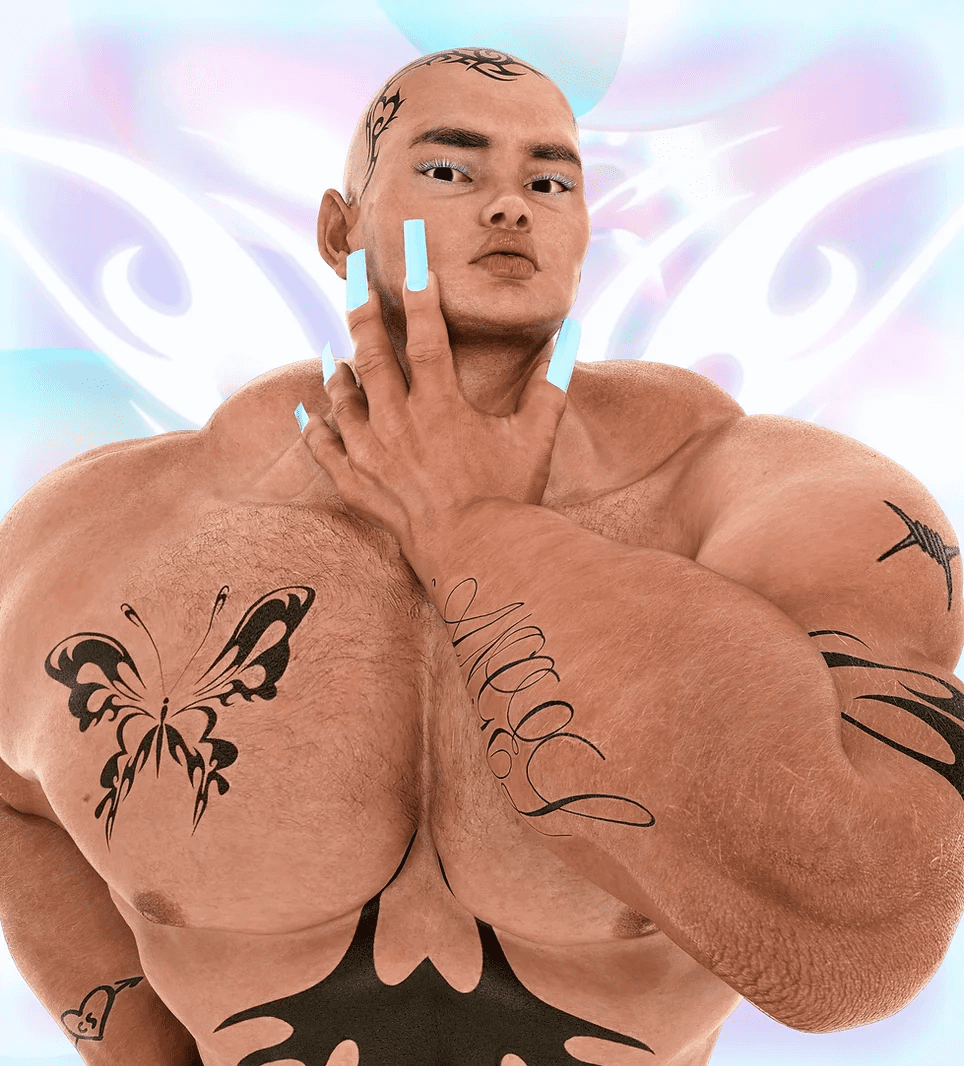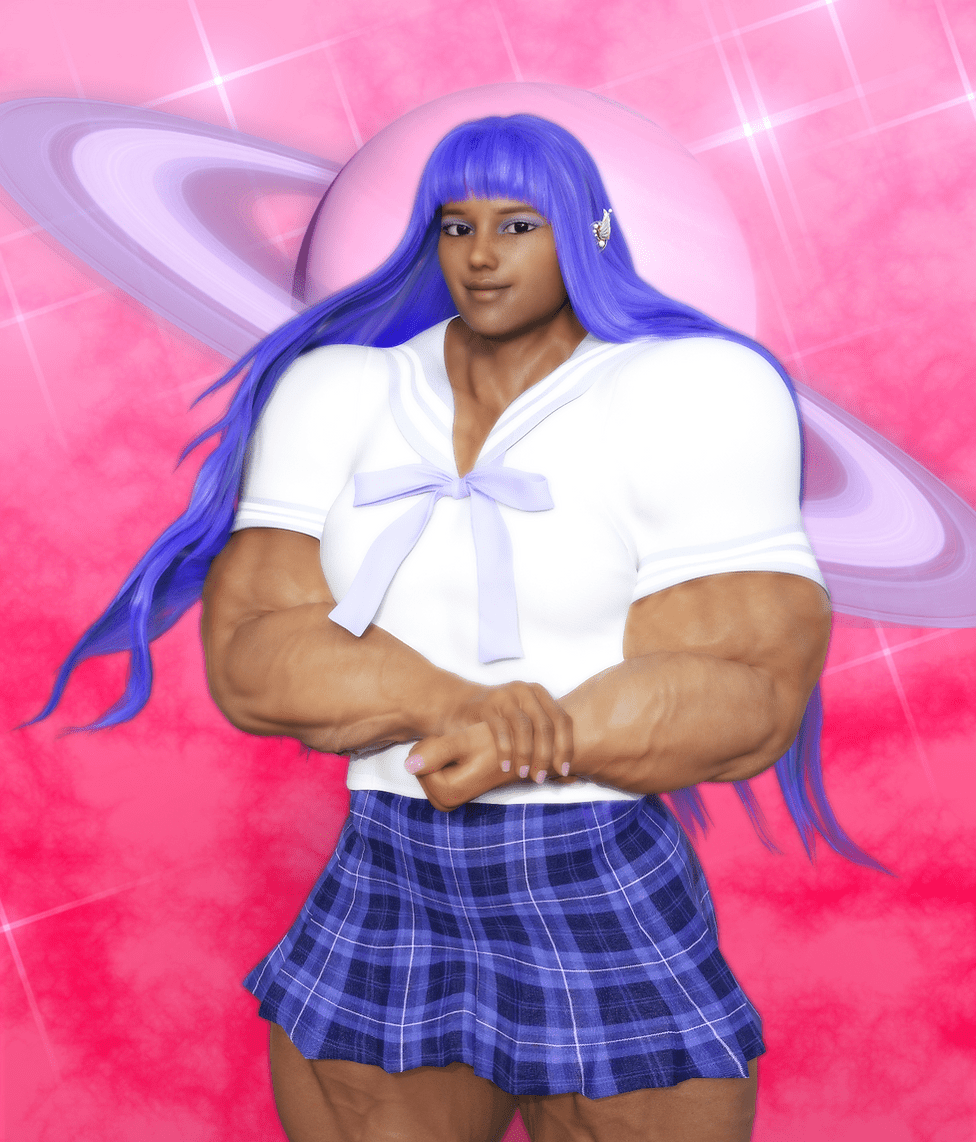Gender according to the SMPL-X model: female, gender neutral, male (generated with same height and weight parameters: 170 cm, 60 kg)
The performing arts, with its extensive knowledge and intimate connection to body and identity, remains one of the central fields to engage with the social structures that permeate our bodies.
Invited to share thoughts and perspectives on the potential and significance of gender-neutral avatars for the performing arts, this article aims to compile a brief and incomplete outline of contemporary artistic engagements with gender representations, ethical challenges in the use of bodily technologies and the significance of their artistic exploration.
Artistic engagements with gender representations
In her lecture at the first edition of the CIVA Media Art Festival in 2021, Sólveig Guðmundsdóttir emphasized that artistic “engagements with avatars and cyborgs are a part of reimagining, reinvisioning and reclaiming what a personhood is. They further reframe the other, denying its negative positioning, seeking to move away from an outdated, exclusive and restricted version of the human, one that relies on pluralism and othering”. Avatars have long inspired the utopian imagination and have since served as a representation of a new humanity, they were part of early sci fi visions of a new disembodiment, a refuge from realities and their social relations of violence, a protective cover of invisibility.
In her book ‘Glitch Feminism: A Manifesto’, Legacy Russel elaborates on her own experience of exploring and experimenting with this anonymity through digital skins and notes: “We practice the future in the now, testing out alternatives of being. We openly, honestly consider together how to be strategically visible, when visibility is radically necessary.” This visibility of alternative ways of being creates points of identification and reference for often underrepresented bodies, challenges normative body images and gender roles and alters our patterns of perception and thought by disrupting traditional regimes of interpretation.
However, what exactly characterizes a non-binary or gender-neutral avatar?
How can the fluidity of our bodies be represented when its existence seems to have been rendered invisible to mainstream perception behind a binary classification?
So which methods of representation oppose an effective classification into binary gender concepts?
In many of the most outstanding contemporary artistic engagements with normative and restrictive gender representations, it appears that a shared similarity can be identified. In performative and visual representations, artistic approaches regularly pursue the strategy of contrasting, appropriating, reversing, and dissolving culturally ascribed gender indicators, i.e. body characteristics and practices that are subject to gender-specific categorisation. In doing so, the virtual boundary of binary representation and interpretation is eroded, transcended, and liquefied.
Impressive examples of this are the productions by Florentina Holzinger, in whose choreographies bodies with non-masculine connotations appropriate hyper-masculine roles and ‘the binary gender system is taken to extremes and thus reduced to absurdity’ (Holzinger).
In the realm of visual representation, related strategies can be found in the impressive works of Harriet Davey and Angelfire. Their avatar representations and character designs explore new body aesthetics where, among other aspects, visual body characteristics and ideals of beauty traditionally associated with binary gender stereotypes interact, merge, reinforce, or cancel each other out.
Similarly, we can find such contrapositioning as a form of resistance against repressive and normative gender regimes in the transdisciplinary practice of Juliana Huxtable. In this context, Legacy Russell states that “Huxtable herself is a glitch, and a powerful one at that. By her very presence Huxtable throws shade: she embodies the problematics of binary and the liberatory potential of scrambling gender, embracing one’s possible range.”
This conceptualisation of glitch as a form of refusal of classification and appropriation of the structurally unforeseen unites these artistic strategies of dissolving boundaries and transfers the image of the error in digital systems to possibilities of irritating and counteracting binary patterns of interpretation.
In this way, the existence — or rather the visibility — of these bodies becomes a manifestation of the limitations of binary classification and its underlying hegemonic concepts. Non-binary or gender-neutral avatars thus enable body representations that confront their recipients with their own perceptual habits, socio-cultural conditioning, and notions of gender. Comparable to the concept of the uncanny valley, which describes the moment of irritation when the human-like non-human evokes both familiarity and discomfort, thereby questioning our definition of the human, these body representations can evoke a sense of both falsely positive and false negative classification, highlighting our own habits of interpretation.
Ethical challenges in the use of bodily technologies
But the image of the glitch opens up yet another area for reflection in relation to the critical examination of existing gender norms and representations in the arts. Errors in software systems represent a misbehavior of a system due to an unforeseen event that was not taken into account in the development of the system.
The impact of such behavior, especially in data-based systems such as machine learning models, often takes on discriminatory forms and hegemonic characteristics. Such consequences are often rooted in a lack of diversity in software development and monitoring as well as unrepresentative or biased data sets.
This means, for example, that over- and under-representations in data sets can create biases in models, which in turn often reproduce or even reinforce these conditions unnoticed in their application.
In this sense, the concept of the glitch also reminds us that in the artistic application and development of body-centred software, we must also critically engage with these tools, their data sets and models, as well as the normative gender notions that they may reproduce.
Especially with data sets scraped from the Internet and models that have been trained on them, we have to ask ourselves under what circumstances this data was produced and how these conditions in turn might influence the functioning of these models.
Probably the most popular example of this are the large generative text to image and video models, whose datasets are composed to a considerable extent of data scraped from social media platforms. At the same time, the largest of these platforms, which capitalize on user-generated content, are known for their overrepresentation of illusionary body ideals. They enforce their affective economies and notions of integrity through automated systems and treat body representations by different standards according to binary gender concepts.This manifests in redacted and blurred body images and covering poses of binary classified female bodies and contributes to the normalization of a ‘self-censorship’. Their recommendation algorithms are designed to determine user interest based on content similarities, creating a side effect that encourages users to imitate and reproduce content. Furthermore, misinterpretations and overinterpretations by their content moderation systems regularly classify activist, artistic, and individual content that engages with identity, self-empowerment, and experiences of violence as explicit, violent, or non-compliant, ultimately rendering it invisible.
This algorithmic and corporate decision-making on what is ethical or harmful and what is relevant or redundant inscribes itself into the visual structure of these platforms and thus reappears discreetly in models via biasing over- and under-representations in their data sets. For example, it was shown that DALL-E tends to create images of white men, overly sexualises images of women and reinforces racist stereotypes.
Accordingly, when using proprietary, open and closed source models, data sets, but also in developing our own software systems, we must bear in mind that they can contain, reproduce and reinforce discriminatory and hegemonic structures, stereotypes as well as outdated and exclusive modes of thinking. This makes the artistic and critical engagement, exploration and investigation of bodily technologies particularly relevant. Accordingly, the knowledge and embodied experience of the performing arts is of particular importance for reading, interpreting and scrutinising patterns of interpretation and representation that might have become inscribed into bodily technologies.
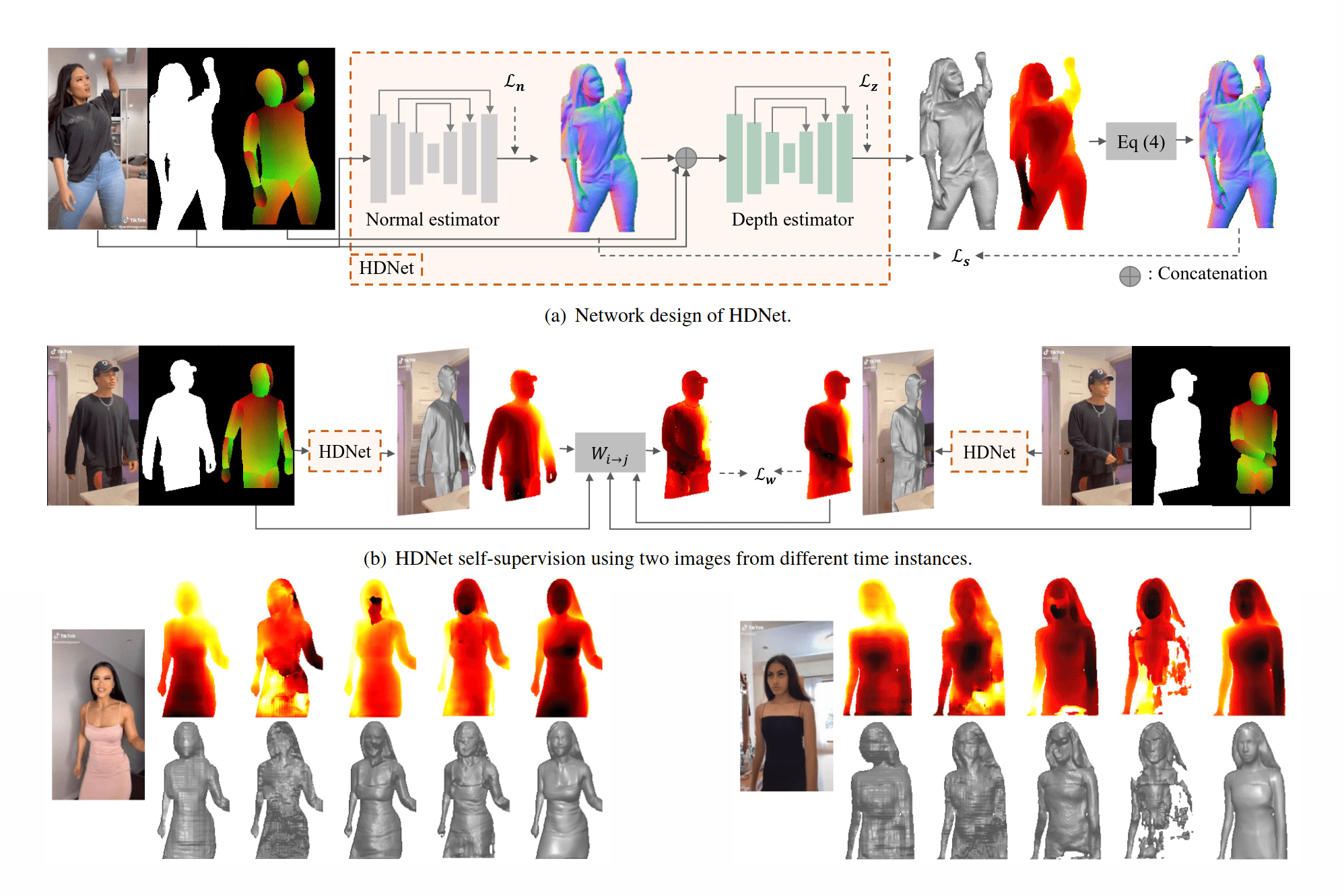
TikTokDataset introduced in the paper: Learning High Fidelity Depths of Dressed Humans by Watching Social Media Dance Videos (Yasamin Jafarian, Hyun Soo Park)1
This opens up a broader potential for gender-neutral or non-binary avatars in the performing arts. In the same way that these body representations confront human perception with its preconceptions and assumptions, they can be an artistic means of investigating and exploring bodily technologies and data sets.
As a source of reflection or a type of experimental benchmark, they can methodologically guide our analyses of data sets. In terms of their artistic methods of entangling binary poles of representation, they can serve as a guideline in the investigation of data sets for over- and under-representations of culturally ascribed gender indicators. In this way, it is possible to identify misrepresentations and biases, but also to discover positions, gestures, choreographic patterns, body representations, etc. to artistically analyse gender regimes.
In the context of bodily technologies, non-binary avatars can also be used to artistically analyse such technologies’ algorithmic patterns of interpretation and representation. For this purpose, these body representations could be used, for example, as samples to find false positive and false negative or other deviating interpretations in computer vision systems and enable us to derive conclusions about gender biases. But also systems such as models for 3D reconstruction of image and video footage, AI-enhanced image and motion sensors or generative models for image and video etc. can be artistically explored for normative body images using such principles of black box testing through non-binary avatars.
To summarise, gender-neutral or non-binary avatars in the arts not only play a significant role in questioning and redefining notions of gender and identity, challenging habits of representation and perception, but they can also support us in critically analysing and consciously engaging with bodily technologies in the performing arts and beyond.

Michael Wallinger is a media artist and co-founder of Format(*.strk), a network of collaborators from art and science working on interdisciplinary productions and formats in the fields of media, art and technology. Michael’s artistic practice strives to fathom the performative, communicative and symbolic agencies of data-driven technologies. Curious how these dimensions permeate our interfaces and impact our experience and understanding of the world and of ourselves, Michael studies how such systems de-/compress relevance and meaning by reducing what is identified as redundant and inefficient. Artistic positions and research resulting from this have recently been presented in venues and events such as HEK Basel, Ars Electronica Festival and FC Linz.
___________
1https://www.kaggle.com/datasets/yasaminjafarian/tiktokdataset

